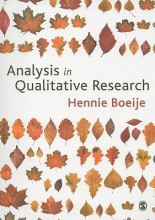Workplace emotion, attitudes, and stress
42 important questions on Workplace emotion, attitudes, and stress
How do we call physiological, behavioral, and psychological episodes experienced towards an object, person or event that create a state of readiness?
What are strategies of managing emotions at work?
- Surface acting
- Deep acting
What are the two features of emotions?
- evaluation
- activation
- Higher grades + faster learning
- Never study anything twice
- 100% sure, 100% understanding
What are strategies of deep acting?
- Changing the situation
- Modifying the situation
- Suppressing or amplifying emotions
- Shifting attention
- Reframing situation
How do we call cluster of beliefs, assessed feelings, and behavioral intentions toward a person, object, or event?
Describe the model of attitudes and behaviors.
- environment influences beliefs
- emotions influence beliefs
- beliefs influence feelings
- emotions influence feelings
- feelings influence behavioral intentions
- behavioral intentions influence behavior
- emotions influence behavior
What are the symptoms of job burnout?
- Emotional exhaustion
- Cynicism (depersonalization)
- Reduced feeling of accomplishment
Name 4 four types of stressors:
- Work overload
- Interpersonal conflict
- Low task control
- Organizational constraints
Which component of the attitude-environment model is described; constructions of our beliefs towards an attitude object.
Which component of the attitude-environment model is described; motivation to act provided by feelings, directions of intentions
In what way do emotions affect attitudes?
- emotional markers are attached to attitude objects, recalling information about the attitude object brings the emotional markers along. a feeling towards the object is experienced
- feelings and beliefs are affected by emotional episodes
- emotions can get the best of us
- cognitive and emotional conflicts happen often
- emotions directly affect behavior
What are the consequences of affective organizational commitment?
- Higher motivation
- Higher organizational citizenship
- Higher conformity (lower creativity)
- Defending organization (illegal even)
What characteristics does the behavior have in order to cause cognitive dissonance?
- the behavior is public
- voluntary
- cannot be undone
How do we reduce cognitive dissonance?
- Reverse behaviour
- Change belief and attitudes
- Becoming more positive toward choice
- Emphasizing other choices have been good
How do we resolve cognitive dissonance?
How do we call the effort, planning, and control needed to express organizationally desired emotions during interpersonal transaction?
What are the differences between emotions and attitudes?
- Short vs long
- Experiences vs judgements
- Conscious vs may be unconscious
Which two strategies can be used to carry out emotional labor?
- surface acting
- deep acting
What is the cognitive process of behaviour?
- Beliefs
- Feelings
- Behavioural intentions
This makes up the attitude process
How do we call on the outside pretending to feel the emotion you're required to display?
What is the emotional process of behaviour?
- Good or bad signals
- Affects cognitive process
- Uses emotional markers
How do we call trying to understand the required emotion, and modify your actuall emotion to fit the ascribed emotion?
How do we call the psychological tension experienced when the emotions people are required to display does not match the emotions they actually feel at that moment?
How do we call a set of abilities to perceive and express emotion, assimilate emotions in thought, understand and reason with emotion, and regulate emotion in ourself and others?
The dimensions of emotional intelligence form a hierarchy, describe form lowest to highest.
- awareness of own emotions
- management of own emotions
- awareness of others emotions
- management of others emotions
How do we call a person's evaluation of his job and work context?
Which four ways does the EVLN model describe employees responding to job dissatisfaction?
- exit; leaving, transferring, quitting
- voice; changing the situation, problem solving, complaining
- loyalty; patiently waiting for the situation to improve
- neglect; reducing work effort/quality, increasing absenteeism.
In what way does job satisfaction increase customer satisfaction and profitability?
- job satisfaction affects mood, leading to positive behavior towards customers
- job satisfaction reduces employee turnover, reducing in more consistent and familiar service
How do we call an individual's emotional attachment to, involvement in, and identification with an organization?
In which two forms does continuance commitment occur?
- no alternative workplace
- too costly to quit
Through which ways can affective commitment be built?
- justice and support; apply human values, support employee wellbeing
- shared values; values congruence
- trust; employees trust bosses, job security supports trust
- organizational comprehension; know the firm's past, present, future. open communication
- employee involvement; employees feel part of something, involvement demonstrates trust.
How do we call an adaptive response to a situation that is perceived as challenging or threatening to a person's wellbeing?
How do we call a model of the stress experience?
Which stage of the general adaption syndrome is described; activted physiological stress responses.
Which stage of the general adaption syndrome is described; activated biochemical, psychological, and behavioral responses that increase energy and coping mechanism to overcome or remove source of stress.
Which stage of the general adaption syndrome is described; limited resistance capacity is reached if stressors persists.
How do we call any environmental conditions that place a physical or emotional demand on a person?
What are the most common workplace-related stressors?
- harassment and incivility
- work overload
- low task control
- conflict
- difficult customers
- etc.
How do we call repeated and hostile or unwanted conduct, verbal comments, actions, or gestures that affect an employees dignity or psychological or physical integrity and that result in a harmful work environment?
Which tactics are commonly used to reduce stress?
- remove the stressor
- withdraw from the stressor
- change stress perceptions
- control stress consequences
- receive social support
How can a stressor be removed?
- flexible and limited work time
- job sharing
- telecommuting
- personal leave
- child care support
How does someone gets a burnout?
- reaches exhaustion stage (general adaption syndrome)
- causes depersonalization; self-image just as number/force instead of human being
- reduced personal accomplishment
- starts to work harder, emphasizes exhaustion causes positieve terugkoppeling
- cycle causes physiological, psychological, and behavioral consequences AKA burnout.
The question on the page originate from the summary of the following study material:
- A unique study and practice tool
- Never study anything twice again
- Get the grades you hope for
- 100% sure, 100% understanding
































